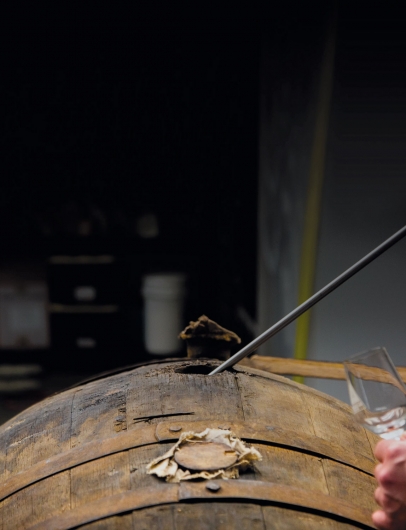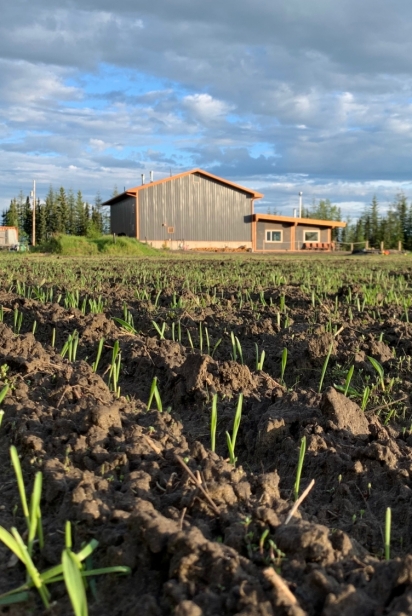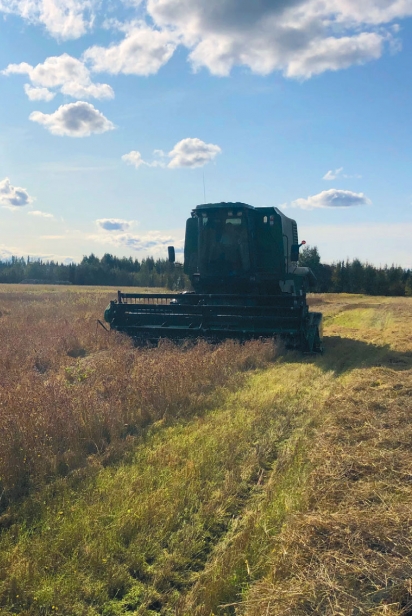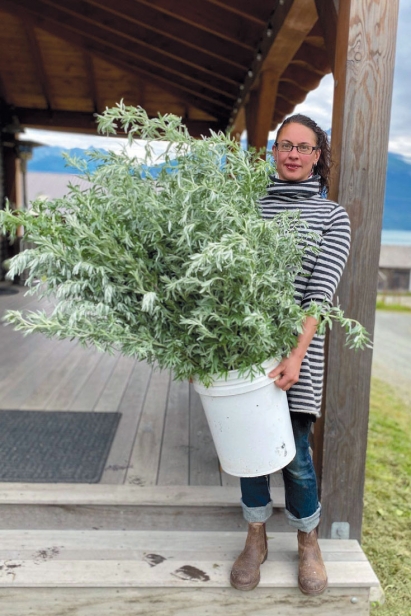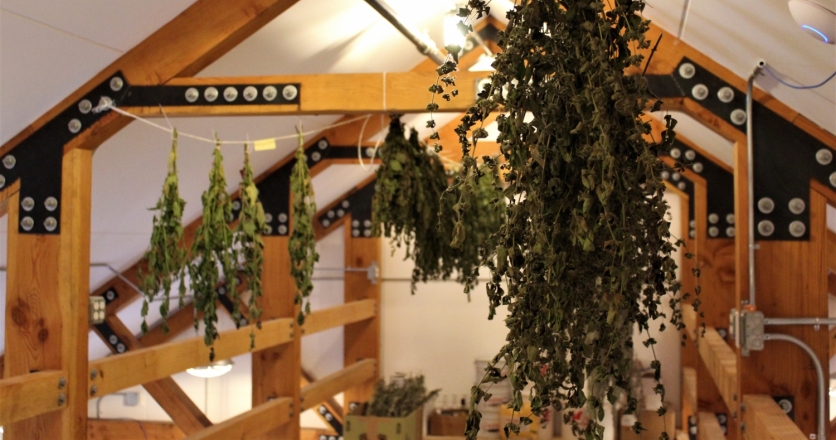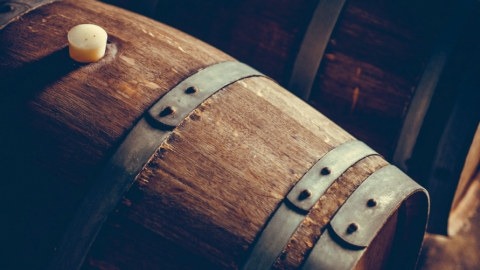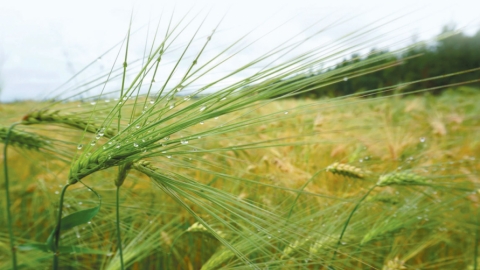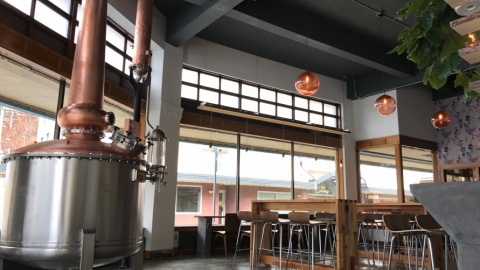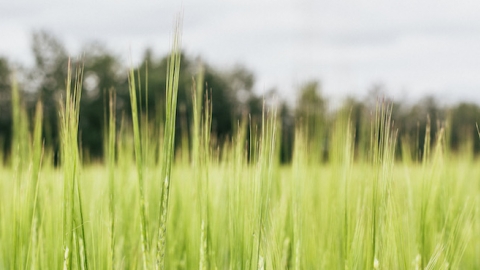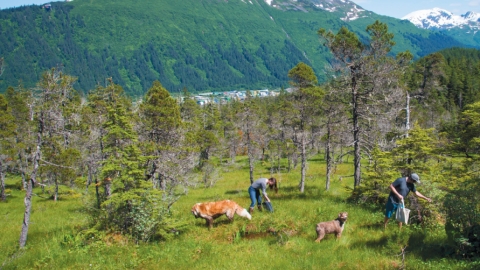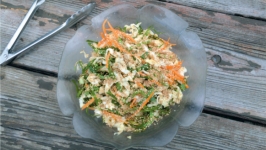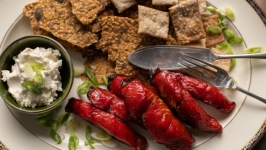Alaskan Spirits
Farm-to-Bottle
Let’s get the obvious—and accurate—pun straight out of the way: Alaska’s distilleries are bottling true Alaska spirit.
We’re not only talking about figurative Alaska spirit here. Many of these local products are made from the ground up—literally— starting with Alaska-grown grain. Anchorage Distillery, for example, makes their award-winning Aurora Gin using barley from Delta Junction, and other spirits from Mat-Su Valley rye and wheat.
Skyler Fancher, a member of Anchorage Distillery’s executive team, explained that Alaska grains are unique in their flavors—with the barley, in particular, lending a sweetness to the final product.
Of course, Alaska grains also come with a short growing season which, together with the “up and coming” nature of our agricultural scene, turns this kind of local production into a delicate partnership between distillery and farmers. They forecast and plan together so the correct quantity together so the correct quantity of the right ingredients end up in the field.
It’s a wild harvest
Using local ingredients here in Alaska requires a creative mindset, and not every local ingredient works well. For instance, two of the distilleries I spoke to use Pacific Northwest juniper berries instead of local berries, because the local juniper just doesn’t taste quite right for their spirits.
One of the most ubiquitous ingredients in local booze is spruce tips, a key ingredient in Port Chilkoot Distillery’s award-winning 50 Fathoms Gin. The owner, Heather Shade, explained that staff and friends harvest the spruce tips—fresh growth from Alaska’s ubiquitous evergreen—every spring in Haines, where the distillery is located. The tips give the gin a unique, but still balanced, local flavor.
Port Chilkoot Distillery puts multiple local ingredients into their Green Siren Absinthe—a product that they chose to distill specifically because one of its chief ingredients, wormwood, grows well in Haines. During the development process they also selected anise hyssop, lemon balm, and mint as key components because the distillery could consistently source them from local gardeners every year. “We didn’t want to put a little ‘locally harvested’ ingredients in everything just for label appeal; we wanted it to be authentic and impactful to our community,” Shade explained.
But if you really want to see local ingredients shine, head to Port Chilkoot Distillery’s tasting room, which Shade described as a sort of test kitchen for mixing their spirits with local flavors. There, you can sample spirits mixed with syrups house-made from highbush cranberries, Sitka roses, elderberries, spruce tips, and other local ingredients, or try bourbon-infused cocktail cherries made from locally grown sour cherries.
Spruce tips also crop up in the base for Juneauper Gin from Amalga Distillery in—you guessed it—Juneau. But spruce tips are just the start. “Our gin has a lot of foraged and harvested ingredients,” said Brandon Howard, co-owner of the distillery. Juneauper Gin also contains Labrador tea, devil’s club, and rhubarb.
Amalga Distillery, though, has even bigger plans on the horizon. “Eventually, our goal is to make 100 percent of our single-malt whiskey with Alaska-grown barley,” Howard said. But to achieve that at the volume they’re putting out, they’re going to need a malt house—a centralized location where grain can be malted and distributed to distilleries. They hope to get there within the next couple of years, while collaborating with farmers in Delta Junction to find the best malting species of barley to grow here in Alaska.
In the meantime, Amalga Distillery staff members are also testing products made with bull kelp, and they regularly produce special-edition gins with a local touch. When I spoke to them in mid-September, they had proofed their latest special-edition batch with pure Alaska rhubarb juice and before that, they’d used Alaska blueberry juice.
Going wild for the berries
Toivo Luick, the co-owner of Hoarfrost Distilling in Fairbanks, makes his vodka with Alaska-grown barley, but when I touched base with him in early September he was busy dealing with a different kind of crop: berries.
“We’ll use every type of berries we can get our hands on,” he said. Those go into crafting natural subsidiary products from the vodka, chief among them a mind-boggling array of liqueur flavors including those of raspberries, blueberries, low-bush cranberries, red and black currants, honeyberries, and sour cherries.
Some of those berries are picked by Luick and his wife; they even pick fireweed flowers, on the rare occasion that time allows, to create sipping vodka with a delicate floral taste. But to get the appropriate quantities, they also purchase from local businesses.
Farm to bottle production
Arctic Harvest Distillery in North Pole takes a truly hyper-local approach to distilling, which starts with growing their own grain. They manage to pull almost all their other ingredients from local sources, too. For example: the honey for their Alaska Honey ‘Shine, an un-aged whiskey, comes from hives tended by a family member.
Doing it all makes summer into a relatively slow season for distilling; the family is so busy doing everything else, right down to growing the grain. After the harvest, a substantial barn allows them to keep malting, grinding, fermenting, mashing, and distilling year-round.
Although Arctic Harvest Distillery’s operation is as close as you can get to self-contained in Alaska, it still fosters a web of local connections, from farmers who collect buckets of spent grain to use as animal feed to locals who stop by to visit.
All the local traffic, explained co-owner Kelly Eggleston, was a pleasant surprise. “When we started this, we didn’t think it would be very busy at the farm tasting room, but we quickly found out that we were wrong ... people want to come out and see the farm, take a walk through the corn maze, or have a drink on the patio and look at the birds.”
Although they’ve closed the inside space for now due to COVID-19, they have an enormous outside space that people can sit in, socially distanced.
Meanwhile, somewhere in the distillery, a unique Alaska whiskey ages in a single four-gallon birch barrel that was made through the local One Tree Project.
“It’s a real process,” said Eggleston. But family-owned distilleries like Eggleston’s are still finding room to flourish—through a combination of locals who appreciate their presence and people from Outside who value the Alaska mystique.
We have universal appeal
Port Chilkoot Distillery is addressing the loss of tourist business, at their own distillery and at the locations of their retail, bar, and restaurant partners around the state, by exporting their products to Michigan and Washington, and setting up online sales through a Washington state retail partner, highspiritsliquor.com.
The idea is to get their Alaska-made products into the hands of people who wanted to visit Alaska but couldn’t. “Our vision is to put a little bit of Alaska in a bottle to share with the world,” wrote Shade in our email exchange, adding that her small, hard-working team maintains their passion and dedication to carrying out that vision, even as they push forward through the challenges of this year. They hope to host visitors again next year.
At Hoarfrost Distilling, Luick is taking the universal appeal of Alaska-made products to the next logical step: aiming to export his high-end sipping vodkas to an international audience. As Luick pointed out, something funny happens when you take an Alaska-made product out of Alaska: the farther afield you go, the more mystique that Alaska-made label bears. “In Seattle they won’t even raise an eyebrow,” he said. “But take it to Thailand, and it’s very exciting.”
“There’s a point of pride in having a 100 percent Alaska-made product,” he added. “And we strive for that in every case we make.”


